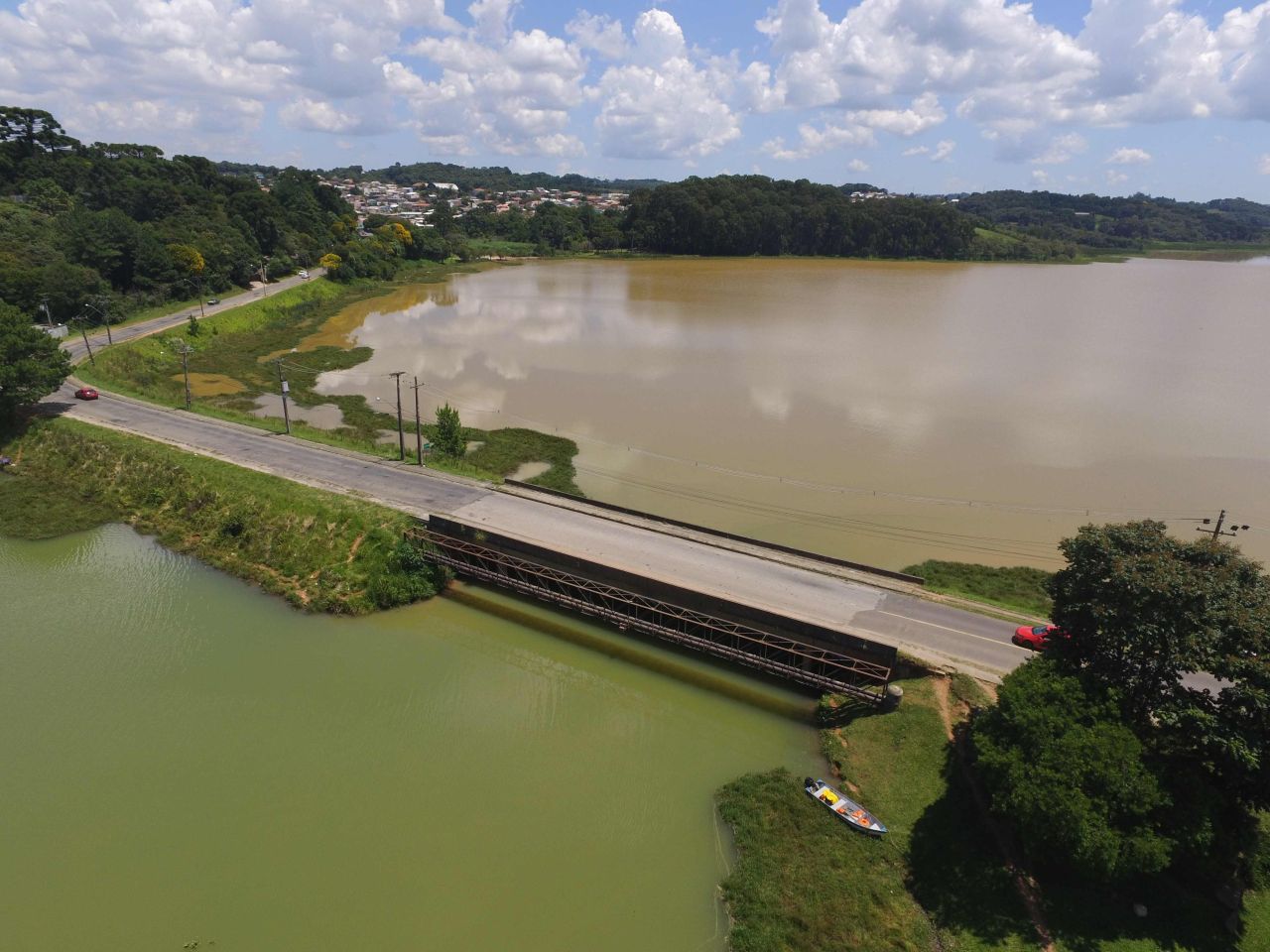In many regions of our planet, reservoirs supply the population with drinking water. However, the water reservoirs are also collecting points for sediments, fertilizers, and pollutants that affect the water quality. It is the goal of the German-Brazilian research project MuDak-WRM to develop a simple model that provides a forward-looking view on the water quality in reservoirs for many years and that can easily be applied worldwide.
The water quality in a reservoir depends largely on its drainage area. To obtain a meaningful model of the processes taking place in reservoirs, the river drainage area must be factored in. If large quantities of nutrients get into the reservoir due to intensive agriculture or forestry or a dense population of the surrounding region, the result can be overfertilization – eutrophication – of the lake supporting a lush growth of algae and often of so-called cyanobacteria as well. Long-term overfertilization makes the water of a reservoir unsuitable for drinking water production.
A German-Brazilian research consortium led by KIT is working on the development of a preferably simple model that allows to predict the medium- to long-term changes to be expected for the water quality in reservoirs. The recently launched research project focuses on reducing the complexity of the underlying scientific approaches and of the data required for the future model so that it is easily applicable to, e.g., developing countries.
“The reduced complexity, compared to the existing models, is a decisive step towards a transferable, globally functional model,” stresses Dr. Stephan Fuchs who is responsible for the MuDak-WRM project (Multidisciplinary Data Acquisition as Key for a Globally Applicable Water Resource Management). Dr. Fuchs is head of the Department of Aquatic Environmental Engineering at the Institute for Water and River Basin Management (IWG) of KIT.
“The main problem that leads to overfertilization are fine particles to which phosphorus adheres and which are carried into the reservoir by the river current,” explains geo-ecologist Dr. Stephan Hilgert who coordinates the joint German-Brazilian project at the IWG. The future model is intended to enable operators of river dams to use a predictive approach for managing the water quality over years. Political stakeholders and authorities could base their decisions on this model and farmers and industrial plants could benefit from the information provided by it. “Thus, sustainable changes in the drainage area would have a lead of several years,” says Hilgert. As an example, the scientist names reforestation projects that prevent large quantities of fine particles from being washed out of fallow soil during heavy rainfalls and being carried into the river and finally into the reservoir.
In the course of the research project, two reservoirs and their drainage areas will be examined: the Große Dhünntalsperre in North Rhine-Westphalia (Germany) and the Passauna reservoir in the Brazilian state of Paraná. By comparing the results, the researchers make sure that the insight gained here can be adopted to other reservoirs as well.
“The dynamic interactions between the drainage area and the water body have not yet been investigated to the full. So this project can fill the gap,” says Hilgert. For this purpose, innovative technologies such as remote sensing are used: hyperspectral cameras attached to drones acquire detailed spectra of the light reflected by the reservoir and thus complement the multispectral satellite images provided by ESA, the European Space Agency. Via a real-time data network (Sensor Web), the partners of the research alliance can, at any time, access the project data, get information on the course of the project and directly use the measurements and results. The Federal Ministry of Education and Research (BMBF) is funding the project, which will continue until March 2020, with EUR 2.6 million for three years as part of the BMBF GROW funding initiative targeted at water as a global resource under the FONA framework program for research on sustainable development.
Apart from the two IWG departments Water Resources Management and Department of Aquatic Environmental Engineering as well as the Institute of Photogrammetry and Remote Sensing (IPF) of KIT, the German participants in this project led by KIT include the University of Koblenz-Landau and, as industrial or public partners, the Wupperverband (regional water management association) and the following companies: 52°North – Initiative for Geospatial Open Source Software GmbH, EFTAS Fernerkundungs-Technologietransfer GmbH, HYDRON GmbH, and TRIOS Mess- und Datentechnik GmbH. On the Brazilian side, the project team is complemented by the Federal University of Paraná (UFPR), the Universidade Positivo, and the SANEPAR water utility. Associate partners in Brazil are the Instituto Paranaense de assistência técnica e extensão rural (institute for the rural development of Paraná, EMATER) and the Instituto das Aguas do Paraná (water management institute of the state of Paraná). The project leverages satellite data obtained from Copernicus, the ESA European earth observation program. This includes above all radar data from the Sentinel 1 satellite mission for the detection of soil moisture variations as well as optical multispectral data from Sentinel 2 for the detection of changes of land use.
Being “The University in the Helmholtz Association”, KIT creates and imparts knowledge for the society and the environment. It is the objective to make significant contributions to the global challenges in the fields of energy, mobility, and information. For this, about 10,000 employees cooperate in a broad range of disciplines in natural sciences, engineering sciences, economics, and the humanities and social sciences. KIT prepares its 22,800 students for responsible tasks in society, industry, and science by offering research-based study programs. Innovation efforts at KIT build a bridge between important scientific findings and their application for the benefit of society, economic prosperity, and the preservation of our natural basis of life. KIT is one of the German universities of excellence.

